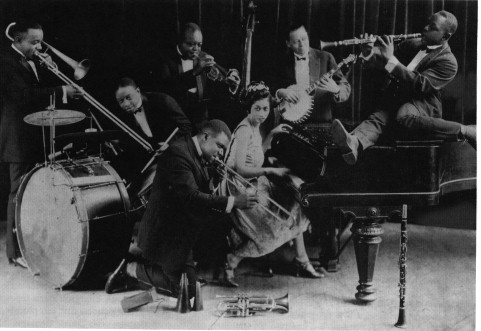Season one of Treme is finished, and I totally failed to produce the last two installments of the Treme essential reference. I think it’s because as the season drew to a close, the fictional plot points overwhelmed the factual depiction of New Orleans and its customs that so captivated me throughout the run of the series.
To fill in the gaps, I would recommend (as I did every week), Treme explained from the New Orleans Times-Picayune, and of course the ongoing series of interviews about Treme at A Blog Supreme.
- Treme Explained: Wish Someone Would Care
- A Blog Supreme: ‘Treme,’ Ep. 9: One Moment, Please
- Treme Explained: I’ll Fly Away
- A Blog Supreme: ‘Treme,’ Ep. 10: One Bright Morning
Fans of the show will not want to miss David Simon’s interview with Alan Sepinwall, which includes a lot of exposition on what Simon intended with the show. Here’s what he had to say in response to complaints about the show being “too preachy”:
So I read Back of Town, and it tells me that we’ve not gone so far awry that the people who actually lost their homes, some of them are still exiled, all of them went through the torture of Katrina and its aftermath – the show is resonsant in its details. And that matters to me, in the same way it mattered to me that Marines found “Generation Kill” to be compelling in its depiction of modern warfare. And I don’t really care what Democrats or Republicans or politicians or people who were for the war or against the war thought about “Generation Kill.” I don’t care that somebody blogging in New York says when a character rants in New Orleans that they feel they’re being preached to.
Treme is, more than any other television series I can think of, a show made to be appreciated in this era. Here’s one of the questions Sepinwall asks Simon:
Just like you did on “The Wire” and “Generation Kill,” you threw people into the deep end of a culture they’re not that familiar with. Specifically with the Mardi Gras Indians, you clearly felt comfortable not having to even use the kid (Darius) for exposition. It was just, “We’re going to watch them work, we’re going to show them doing their thing. People will figure it out, or they won’t.”
Simon’s answer is interesting, but here’s my answer from a fan’s perspective. These days we have Google and Wikipedia to help us fill in the blanks. There are bloggers of all stripes writing about Treme. And of course the New Orleans Times-Picayune and NPR have been doing their part to fill fans in with all of the background information they can stand. So there’s no need for David Simon to fill in the blanks with boring explanations — fans who are interested have the Internet for that. It’s a show for the modern fan who’s willing to put in the effort to get the most they can out of television as a piece of literature. I appreciate they fact that they didn’t waste my time with stuff I could figure out on my own.

Keeping up with TV
It’s a fun time of year for cable television as there are three shows I’m very interested in airing at the same time.
Let’s start with my television obsession of 2010 — Treme. The second season premiered last night, and Nola.com already has their Treme explained post up, providing all of the local color that I so desperately crave. I also assume that NPR’s jazz blog, A Blog Supreme, will be recapping the show each week, as it did last year. Finally, HBO has launched its own Treme blog, written by the show’s story editor Lolis Eric Elie. Be sure to check out his reading list and viewing list.
I’m also watching HBO’s Game of Thrones. I’m a at a bit of a disadvantage because I haven’t read the books. At the same time I’m trying to avoid spoilers from the books. I’m counting on the recappers at Television Without Pity to fill me in on all the details that I’m not catching. Here’s their long recap of the show’s premiere.
Finally, I’m watching The Killing on AMC. It’s an American remake of a Danish murder mystery serial, deliberately paced with dark atmospherics. TWoP is recapping this show as well. For pithier recaps, your go-to source is Project Rungay.